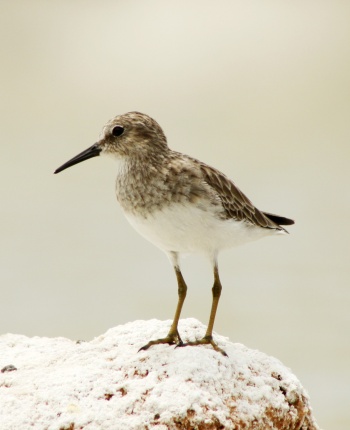Paving the Way for Protection of Peru’s Virrilá Estuary
11/20/2015
By Alex More, Piura Region Coordinator
Peru is home to nearly 20 million acres of wetlands, located mainly in its Andes and Amazon region. Although the coastal wetlands make up a smaller percentage of the national total, they are critical for the environmental services they provide to the region.
The Sechura wetlands are located in the lower basin of the Piura River, which is strongly influenced by seasonal rains and the El Niño, and can reach up to 120 times its average area. Sechura is the only province in Peru that houses three types of coastal wetlands: an estuary (Virrilá), lagoons (Napique and La Niña) and mangroves (San Pedro and Chulliyache). Each possesses unique ecological features as a result of convergence of the warm Equatorial current and cold Humboldt current that are significant to the economic productivity of Sechura Bay.
Urgency of conservation
Of Peru’s 11 coastal wetlands, only four are protected by SERNANP, the national system of protected areas. Meanwhile, the Virrilá estuary is facing myriad threats to its health and stability. These threats include pollution from fishing vessels and dumping of solid waste, the illegal capture of threatened species. It is critical to protect this ecosystem by regulating the pressures on it while enabling local people to draw a livelihood from sustainable industries such as tourism and fishing.
Biological importance of the Virrilá estuary
The Virrilá estuary is one of the largest in Peru and is located in the Sechura desert ecoregion, which is the least represented in Peru’s system of protected areas. Virrilá has one of the highest concentrations of shorebirds in Peru and is recognized worldwide as a priority area for bird conservation due to the high concentration of marine and aquatic birds, which can reach more than 50,000 annually. Many of these species migrate every year from North America, usually in the summer months. Thirty species of migratory shorebirds have been identified in the Virrilá estuary, the most important being the sanderling (Calidris alba), the spotted needle (marbled godwit) and the accidental sandpiper (Calidris mauri). These species are globally considered a ‘High concern’ and are a conservation priority for the U.S. government. Virrilá also has one of the highest concentrations of flamingos in Peru, with 12,000 to 15,000 individuals.
The Virrilá estuary meets the requirements to be declared a RAMSAR site as well as become part of the Western Hemisphere Shorebird Reserve Network (WHSRN). The estuary is also important to safeguard for green turtles (Chelonia mydas).
Economic Importance of Virrilá
In the Virrilá estuary, fishing has historically been a major part of the region’s economy and many families rely on it for their income. Virrilá is home to more than 27 species of fish, such as mullet, tilapia, carp, flounder and halibut. The fishing industry in Virrilá reaches its peak during the summer with about 17 tons per month, and drops to 3.5 tons per month in the fall.
Virrilá is nationally recognized for its species of flora and fauna (particularly the large flocks of migratory birds present during the summer) as well as its unique landscape, creating an opportunity for tourism. Currently, the Virrilá estuary is part of the tourist route for three local operators in Sechura and draws regular visitors from Lima and Piura. Virrilá is an important part of the local identity for the people of Parachique, La Bocana and Sechura, and provides key environmental services that generate income through fishing, farming and bee-keeping.



